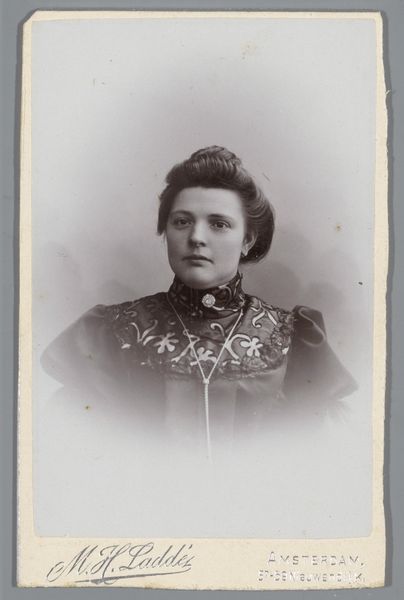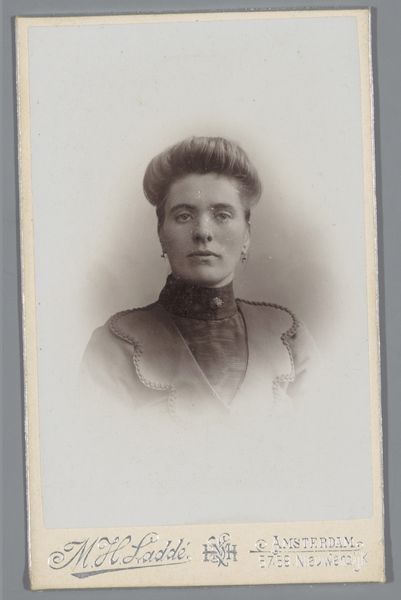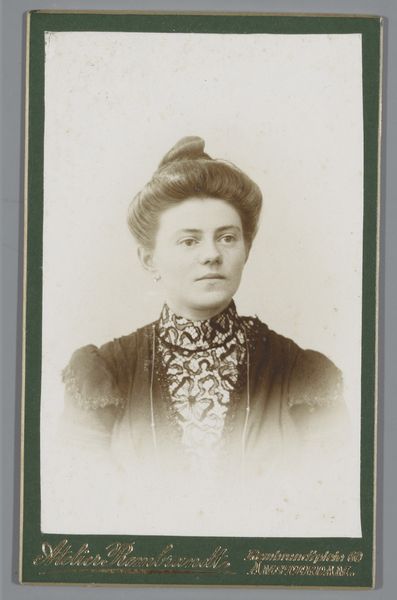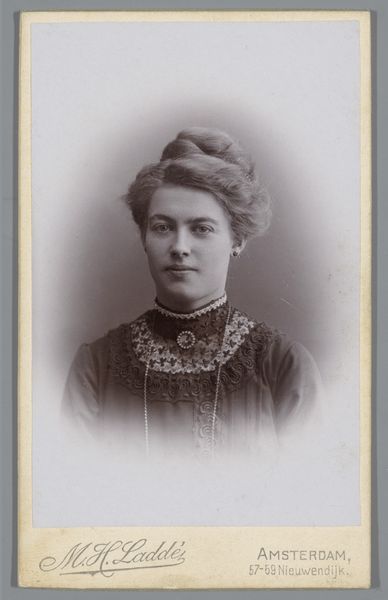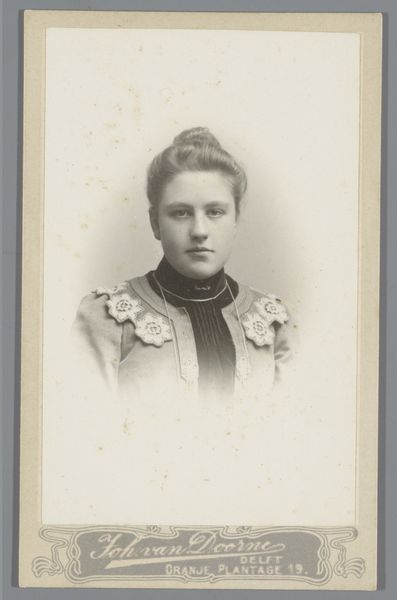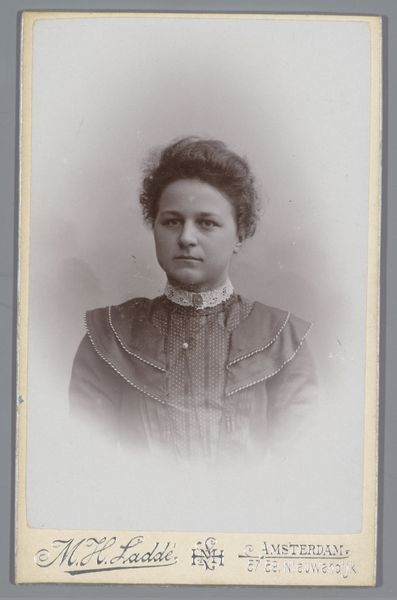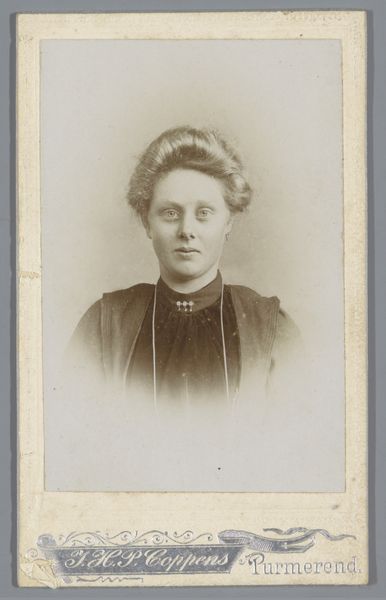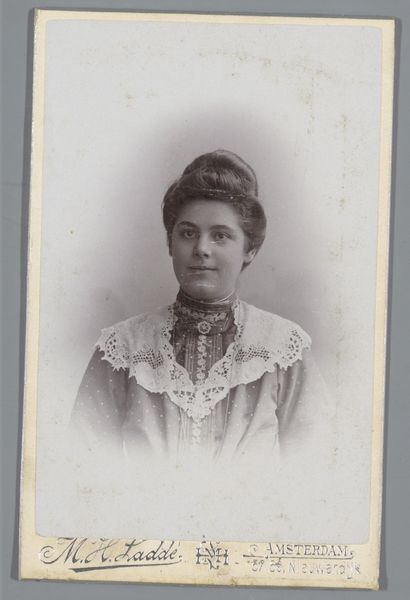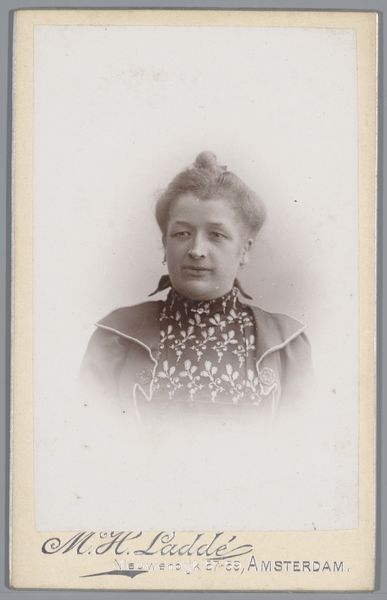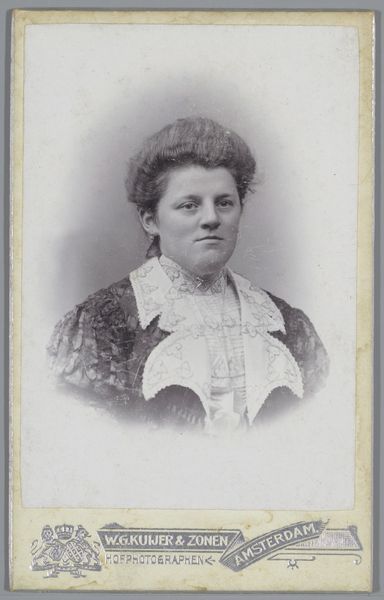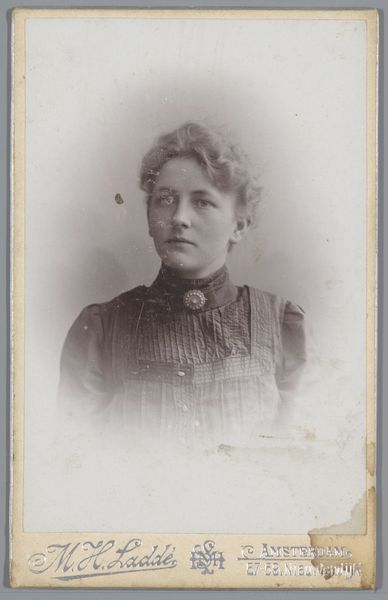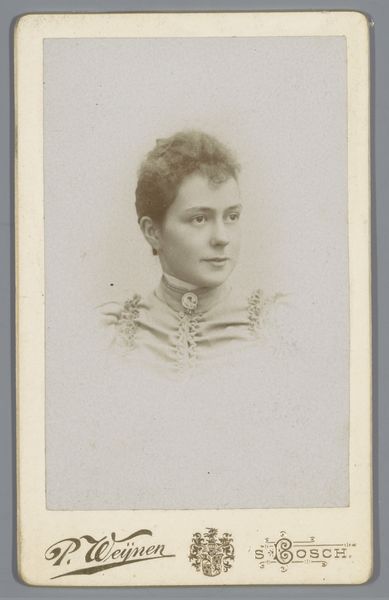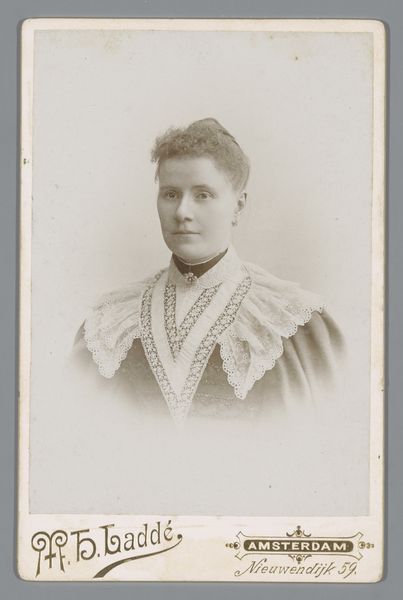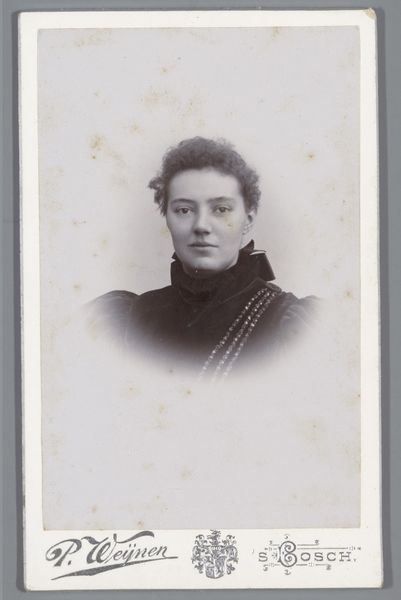
photography, albumen-print
#
portrait
#
photography
#
albumen-print
Dimensions: height 107 mm, width 66 mm
Copyright: Rijks Museum: Open Domain
Curator: Machiel Hendricus Laddé captured this albumen print portrait of an unknown woman sometime between 1892 and 1906. It resides here at the Rijksmuseum. Editor: It has a soft, almost melancholic atmosphere, doesn't it? The way the figure seems to emerge from the fading tones gives it a ghostly, ephemeral quality. Curator: Absolutely, and understanding the history of photographic portraiture can give us insight. The sitter's anonymity and the formal composition speak to a certain democratizing trend—access to portraiture becoming more widely available to women during this time, while simultaneously reproducing the conventions of patriarchal representation. How is she positioned, what is she wearing, what does it communicate? Editor: I agree about the composition being formal; observe the careful arrangement of the light and shadow, guiding our eye directly to her face. And that high collar with the small brooch. But, despite the conventional presentation, there's something remarkably direct about her gaze. Curator: That's precisely it. The subtle nuances are crucial. I read that direct gaze as perhaps an intentional reclaiming of agency—within the very limited constraints imposed upon her in her role as the object of an artist’s gaze, of photographic technology itself and of societal expectation of her identity. It speaks volumes about the evolving socio-political context of the fin de siècle and emergent gender expectations. Editor: And notice the textures, how sharply the detail renders the folds in her dress compared with the slightly softer focus of her face and hair. It subtly draws our attention to her expression. This is further enhanced by the stark contrast within a limited tonal range. Curator: Right. The albumen print medium would have afforded a great level of detail. So what appears “soft” to you could very well have been a deliberate decision to allow light to reveal specific details about this individual woman. Perhaps suggesting an inner life obscured behind conventional representation. Editor: Thinking of it as intentional, I can perceive an intimate, quiet intensity in the way the portrait emphasizes certain facets. A window to inner emotional complexity. It seems an apt encapsulation. Curator: Indeed. I find this close inspection reveals more about what she may have wanted us to glimpse, but it can also offer so many ways of contemplating the relationship between female identity, representation and authorship, then and now.
Comments
No comments
Be the first to comment and join the conversation on the ultimate creative platform.
